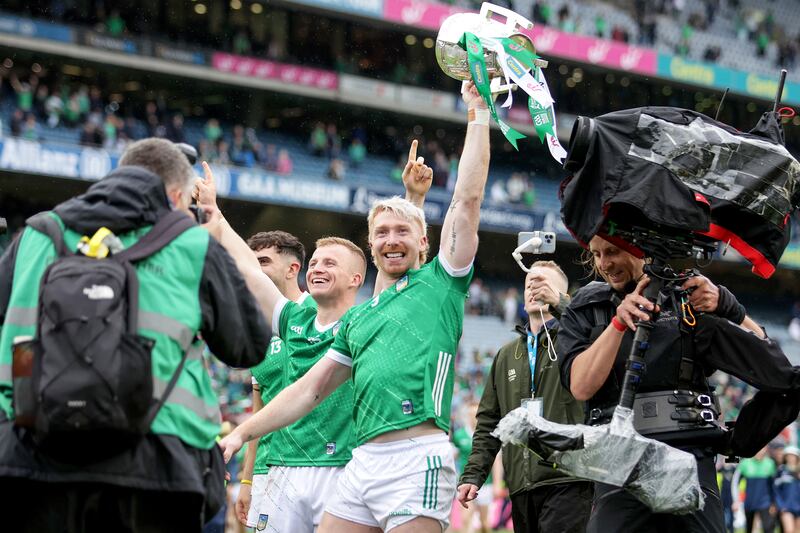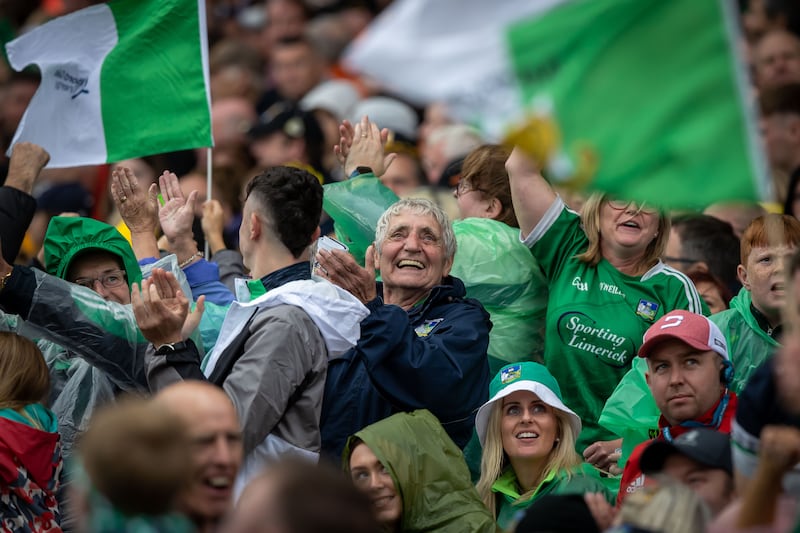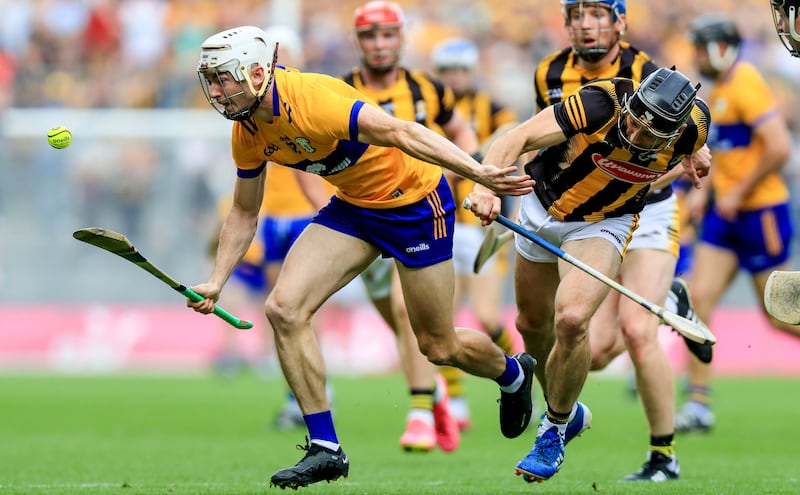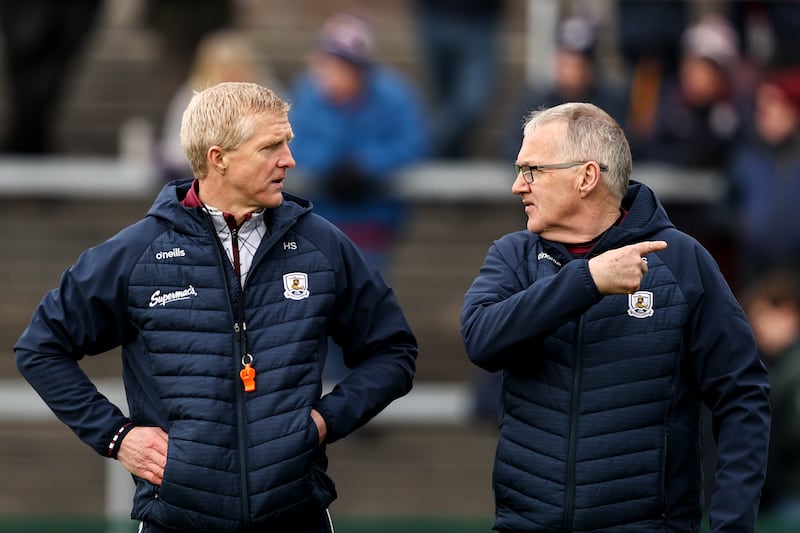If the answer is Limerick, are there any other questions? If they have the best players, the deepest panel, the greatest bank of experience, the smartest coach, if they are the authors of the standard, should there be any other questions?
Just one other question: could it be that simple?
Before a ball is pucked in the championship, before every prediction is undressed, there is something comforting about the All-Ireland champions. It is easy to say simple things about them that hold true. They are a known quantity, consistent in their patterns and their team selections; their moods swing on a short spectrum, doubts come and then go.
Their system of play is governed by a strict grammar which makes it easier to correct. In the league semi-final against Kilkenny, for example, Limerick were just a waxwork likeness of themselves. John Kiely and Paul Kinnerk were inanimate on the sideline.
Darragh Ó Sé on the Galway football team: The 15 men bidding for All-Ireland glory
Michael Murphy on Armagh: The 15 Orchard men bidding for historic All-Ireland football glory
Armagh v Galway: Throw-in time, TV details, ticket and team news for All-Ireland football final
Armagh and Galway name starting line-ups for All-Ireland final
For Limerick, though, a flaccid performance like that in a decaffeinated competition, is not a source of stress, or mystery. The offences against their game plan are easy to identify and the solutions are in the textbook, from which all of them have been homeschooled.
Everyone in the group knows Limerick’s desired tactical shape, everyone is aware of the baseline for intensity and aggression, they understand how the ball must be minded and moved. Everything is counted and quantified and they know that numbers are the whole truth. From every angle, their structure is supported by pillars.
In contrast, Tipperary emerged from the ruins of a league semi-final in Portlaoise a day later, dazed and coated in dust. Every other team in the championship is looking for something, or many things; Limerick already have what they need.

And still, they must go somewhere new and somehow make it feel like a place they know. No hurling team has ever won five All-Irelands in a row. In the history of the GAA only the Dublin footballers have scaled such a peak.
In the whole of the 20th century just four teams put themselves in this position: the Wexford footballers in 1919, the Cork hurlers in 1945 and the Kerry footballers twice, in 1933 and 1982. Of those teams, Mick O’Dwyer’s Kerry took their run at history to the last day.
It is extraordinary to think that Limerick are already the third team this century to have this chance. Out of the blue, bingeing on All-Irelands became a thing. Is there anything Limerick can glean from the experiences of the others? Is anything recyclable?
[ Ciarán Murphy: Jeopardy makes the Munster hurling championship a force for goodOpens in new window ]
Gary Keegan, now with the Ireland rugby team, was the performance coach with the Dublin footballers when they pulled it off in 2019. A few months later he spoke about the mental landscape they had trekked across, trusting their compass and doing without for a map.
“The difference with a five-in-a-row scenario,” Keegan said, “is that you can’t go to the oracle of five-in-a-row and have a conversation with them. So, you’re running a little blind. For us, the elephant in the room was never the five-in-a-row. The elephant was the noise that was starting to infiltrate. Is that a factor? Is that making us tighten up a little bit?”
The key for Keegan, though, was not to ignore the noise and try to make it go away, but to acknowledge it; come to an arrangement with it. In a homespun way, Brian Cody tried to do the same thing with Kilkenny in 2010. “There is no point in avoiding talk about five-in-a-row,” he said at the end of 2009, “because it will be everywhere. Our lads won’t get bogged down in that. All the hype will be unavoidable, but it doesn’t bother me.”

One of the critical differences between what Limerick face now and what Kilkenny and Dublin faced in those seasons, though, is early season jeopardy. In 2019, Dublin won their first six championship matches by an average of 16 points and were never going to meet a team that might beat them until the All-Ireland semi-final, at the earliest.
To reach the All-Ireland final in 2010 Kilkenny played three matches, spread over seven weeks and won them by an average of nine points. They navigated midsummer like they were boating on a canal.
Limerick have none of those comforts. The Munster championship is like the opening scene from Martin Scorsese’s Gangs of New York – a turf war, arranged by appointment and decided by knives and hatchets. At the end of the fight, the Daniel Day Lewis character reminds his gang that they can cut off an ear from the fallen, as a trophy. It is not a literal comparison, of course, but the Munster championship channels some of that spirit.
Since the current system was introduced in 2018, only Tipperary have won all four of their round robin matches in Munster. They did that in 2019 and ended up losing the Munster final by 12 points. Limerick lost just once in the round robin phase last year, but could easily have lost three times; Waterford and Tipp both let them off the hook. That is the nature of the beast.
Are there any cracks? Have they peaked yet? Is there any way of knowing? The opening 35 minutes against Kilkenny last July was the worst half by Limerick in an All-Ireland final in five appearances; for the first time in those finals, they trailed at the break. But the last 20 minutes may have been the best they ever played – at least it is on a shortlist, along with the first half of the 2021 All-Ireland final, and the second half of the 2021 Munster final.
Their starting 15 in the All-Ireland final last year had 573 championship appearances between them. None of them had made fewer than 30 appearances; a handful had made more than 40. Operating under a much different championship system, only five of the Kilkenny team that won four-in-a-row in 2009 had made more than 30 championship appearances at that point in their careers.

In a year like this, with a shot at immortality, those vast reserves of experience must count for something. In the seven championship games they played last year, they looked vulnerable or mortal in at least six. Their mentality carried them. Is there another team in the championship with the mind to stay the pace? All the way?
The chasing pack are all searching for something. Clare had a more fruitful league than anybody, not just because they won the competition but because of the players they blooded. Darragh Lohan is a viable option at centrefield now, Conor Leen is in the mix for corner back, Cian Galvin can be trusted at wing back, Seán Rynne, their under-20 star, is a terrific prospect. But the core players on this Clare team have all reached 30; it will soon need a new skin.
Tony Kelly’s recovery from ankle surgery has been slow and carefully managed and Ryan Taylor’s comeback from an ACL injury suffered in Croke Park last summer is a work in progress. They can manage without those players in the league, but not for an All-Ireland campaign.
Winning the league will have yielded a dividend for their morale and self-esteem, but in each of the last two seasons Clare have lost the two games they most needed to win. That is a psychological barrier they must cross.
Kilkenny needed to find new forwards in the spring and instead unearthed Shane Murphy, a fine young defender. In golf, on the PGA Tour, there is a stat that measures bounce-back ability, tracking how players respond to a bogey. In hurling, Kilkenny would lead that metric. Nothing stops them; they lose, or they look ordinary or they’re depending on TJ Reid to do something and none of it amounts to weakness.
Galway have the opposite profile. For them, nothing is simple. When they won the All-Ireland in 2017 we assumed they had renounced their old habit of being less than the sum of their parts but it has taken root again.

In his first two years as manager, Henry Shefflin had not made an appreciable difference. Persuading Eamon O’Shea to come on board for year three was a recruitment coup. If anybody can ignite the Galway attack it is O’Shea.
Who else? Cork have a deeper panel than last year and there are grounds for believing they have improved. They can perm a perfectly plausible starting 15 now from about 22 or 23 players, but there are still question marks about their full-back line and their half-forward line and the next eight days will tell a lot.
Tipp? Who knows? They finished the league in a tailspin and, for the second year in a row, their first two championship matches are away from home. They will need to reveal something that we haven’t seen yet.
If Poirot assembled those suspects in a room, is there one he would think was capable of murder? Maybe Clare.
But, that wasn’t the question you asked.
Limerick.






